Years of service 1909–43 | Role Political figure Name Theodor Eicke | |
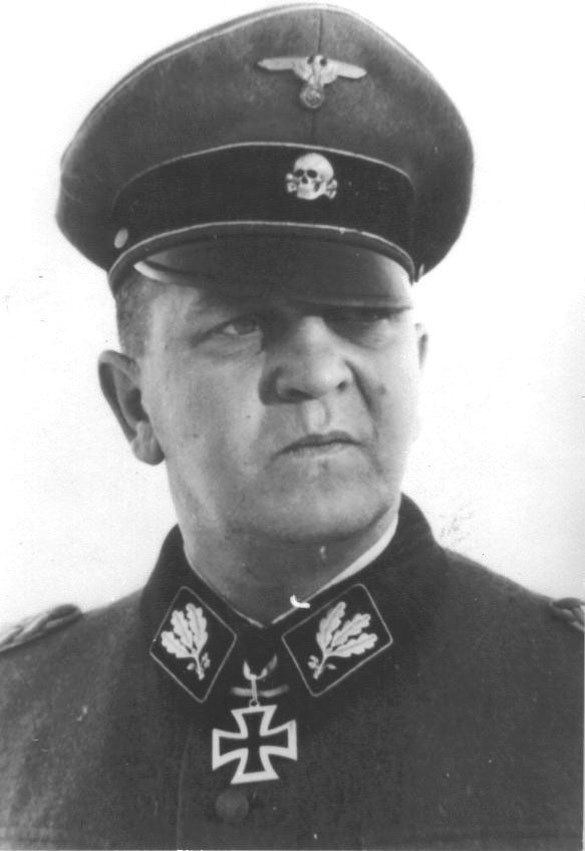 | ||
Service number NSDAP #114,901SS #2,921 Commands held 3rd. SS-Division Totenkopf Died February 26, 1943, Kharkiv, Ukraine Awards Knight's Cross of the Iron Cross | ||
Organizations founded SS-Totenkopfverbande | ||
Theodor Eicke (17 October 1892 – 26 February 1943) was a high-ranking commander in the SS of Nazi Germany. He commanded the Dachau concentration camp and the SS Division Totenkopf of the Waffen-SS.
Contents
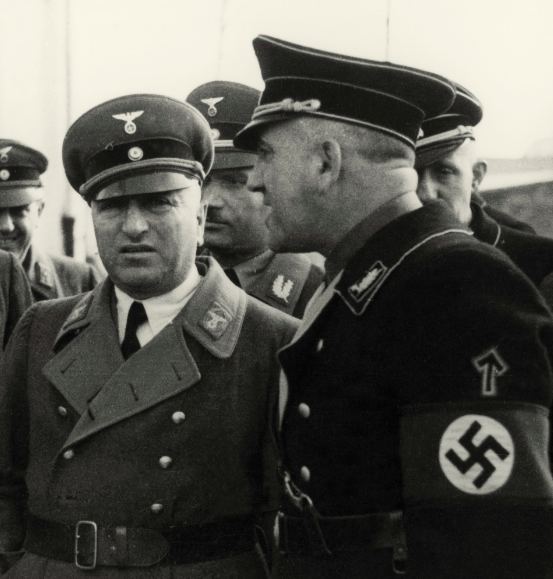
Eicke was one of the key figures in the establishment of concentration camps in Germany. Together with his adjutant Michael Lippert, Eicke executed SA Chief Ernst Röhm during the Night of the Long Knives purge in 1934. Eicke was killed on 26 February 1943.
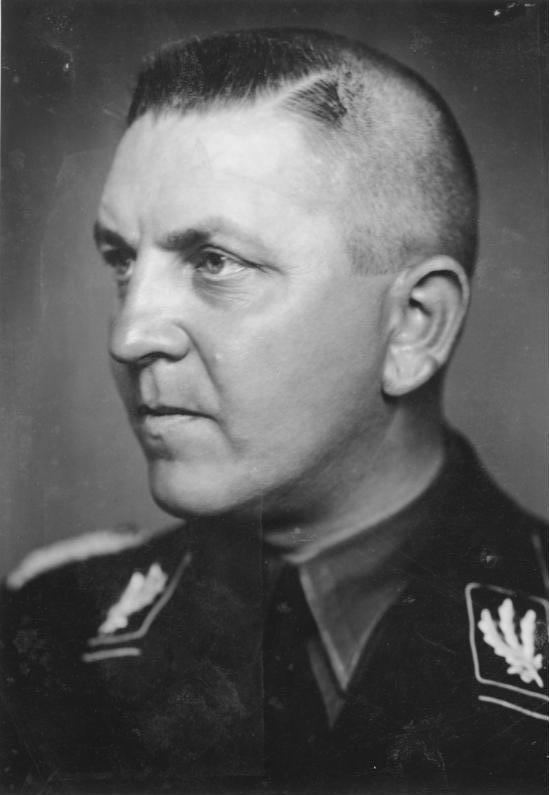
Early life and World War I
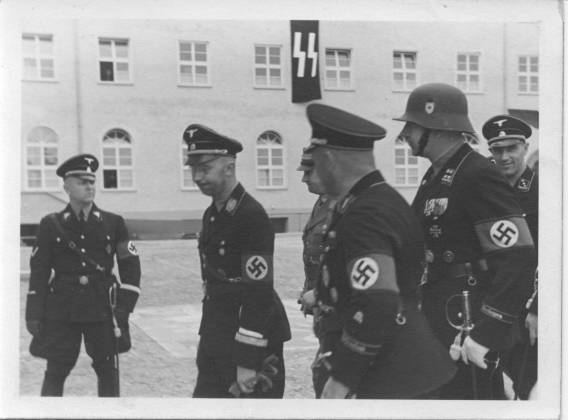
Eicke, the son of a station master, was born in Hudingen (Hampont), near Salzburg (Château-Salins) (then in the German province of Elsass-Lothringen) into a lower-middle-class family. The youngest of 11 children, he did not do well in school and dropped out at the age of 17 before graduation. He joined the 23rd Bavarian Infantry Regiment at Landau as a volunteer, and then he was transferred to the Bavarian 3rd Infantry Regiment in 1913. He participated in the Lorraine campaign of 1914, fought at both Ypres battles in 1914–15, and was with the 2nd Bavarian Foot Artillery Regiment at the Battle of Verdun. During the war Eicke served as a clerk, an assistant paymaster, and a front-line infantryman. For his bravery during the First World War, Eicke was awarded the Iron Cross, First and Second Class.
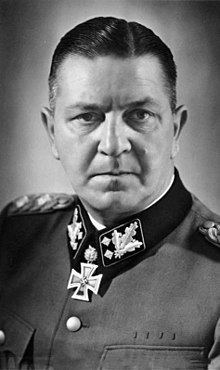
Late in 1914, Eicke's commander approved his request to return home on leave to marry Bertha Schwebel of Ilmenau, who bore him two children (daughter Irma in 1916; son Hermann in 1920).
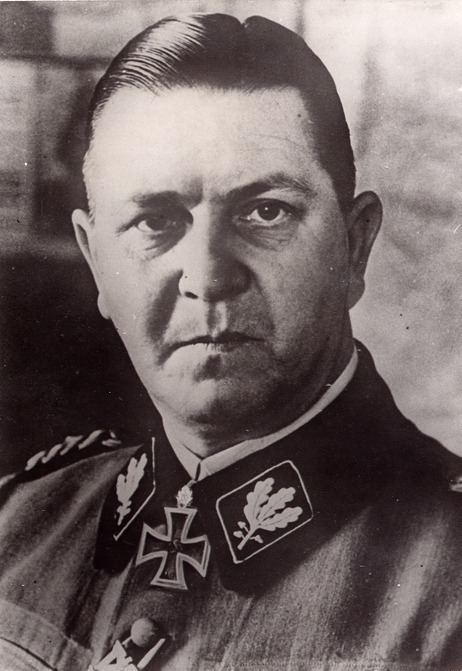
Eicke resigned from his position of army paymaster in 1919. He began studying in his wife's hometown at a technical school in Ilmenau but was forced to drop out due to a lack of funds. For the next several years he remained committed to pursuing a police career, which he briefly secured at two different departments between 1920 and 1923. He initially worked as an informer and later as a regular policeman. His career in the police came to an end however, because of his fervent hatred for the Weimar Republic and his repeated participation in violent political demonstrations. He found work in 1923 at IG Farben in Ludwigshafen and remained there as a "security officer" until 1932 when his full-time service with the SS began.
Nazi activist
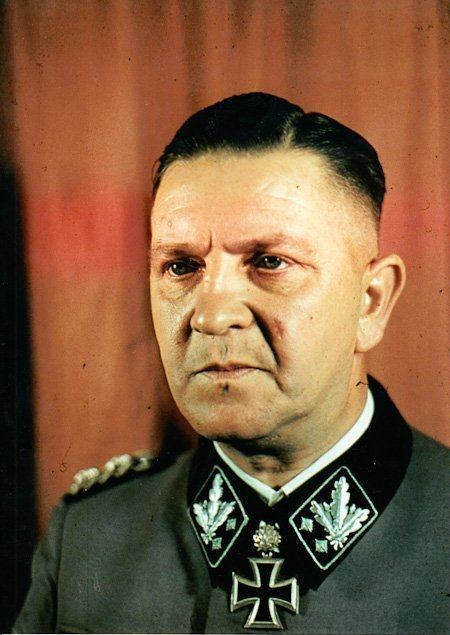
Eicke's views on the Weimar Republic mirrored those of the Nazi Party, which he joined as member number 114,901, along with Ernst Röhm's SA on 1 December 1928. He left the SA by August 1930 for the SS (member # 2,921), where he quickly rose in rank after recruiting new members and building up the SS organization in the Bavarian Palatinate. In 1931, Eicke was promoted to the rank of SS-Standartenführer (colonel) by Reichsführer-SS Heinrich Himmler.
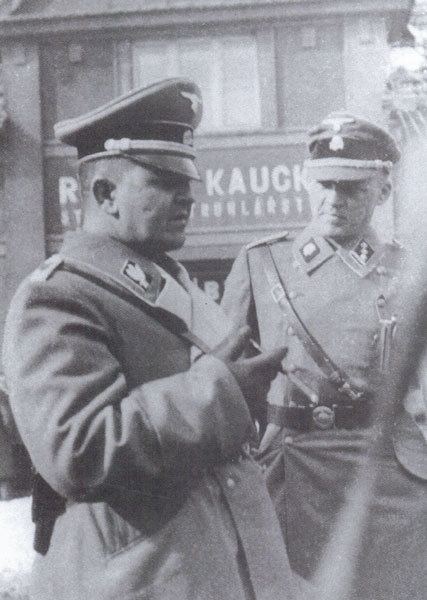
His political activities caught the attention of his employer and in early 1932 he was laid off by IG Farben. At the same time, he was caught preparing bomb attacks on political enemies in Bavaria for which he received a two-year prison sentence in July 1932. However, due to protection received from Franz Gürtner, who would later serve as minister of justice under Adolf Hitler, he was able to flee to Italy on orders from Heinrich Himmler. At Lake Garda, Italy in what was already a fascist state, Eicke was entrusted by Himmler with running a "terrorist training camp for Austrian Nazis" and once even had the privilege of "showing Italian dictator Benito Mussolini around."
SS career
In March 1933, less than three months after Hitler's rise to power, Eicke returned to Germany. Eicke had political quarrels with Gauleiter Joseph Bürckel, who had him arrested and detained for several months in a mental asylum. During his stay at the mental hospital in Würzburg, Eiche was stripped of his rank and membership in the SS by Himmler for having broken his word of honor. Also during the same month, Himmler set up the first official concentration camp at Dachau. Hitler had stated that he did not want it to be just another prison or detention camp. In June 1933, after the mental asylum's director informed Himmler that Eicke was not "mentally unbalanced," Himmler arranged his release, and paid his family 200 Reich marks as a gift. Himmler subsequently reinstated him into the SS, promoting him to SS-Oberführer (senior colonel). On 26 June 1933, Himmler appointed him commandant of Dachau after complaints and criminal proceedings against former commandant SS-Sturmbannführer Hilmar Wäckerle following the murder of several detainees under the "guise of punishment". Eicke requested a permanent unit and Himmler granted the request; the SS-Wachverbände (Guard Unit) was formed.
Promoted on 30 January 1934 to SS-Brigadeführer (major general), Eicke as commander of Dachau reorganized the camp, firing half of the 120 guards who had been billeted there when he arrived. He devised a system that was used as a model for future camps throughout Germany. He established new guarding provisions, which included rigid discipline, total obedience to orders, and tightening disciplinary and punishment regulations for detainees. Uniforms were issued for prisoners and guards alike; the guards' uniforms had a special death's head insignia on their collars. While this ended the haphazard brutality that had characterized the original camps, Eicke's regulations were very far from humane. Heavy-handed discipline, including death in some cases, was instituted for even trivial offenses. Eicke was known for his "brutality", detested weakness and instructed his men that any SS man with a soft heart should "... retire at once to a monastery". Historian Nikolaus Wachsmann asserts that while it was Himmler who established the "general direction for the later SS camp system," it was none other than Eicke who "became its powerful motor." Eicke's anti-semitism and anti-bolshevism as well as his insistence on unconditional obedience towards him, the SS and Hitler made an impression on Himmler. By May 1934, Eicke had already "styled himself" as the "inspector of concentration camps" for the Reich.
In early 1934, Hitler and other Nazi leaders became concerned that Ernst Röhm, chief of the SA, was planning a coup d'état. Hitler decided on 21 June that Röhm and the SA leadership had to be eliminated. The purge of the SA leadership and other enemies of the state began on 30 June in an action which became known as the Night of the Long Knives. Eicke, along with hand-chosen members of the SS and Gestapo, assisted Sepp Dietrich's Leibstandarte SS Adolf Hitler in the arrest and imprisonment of SA commanders, before they were shot. After Röhm was arrested, Hitler gave him the choice to commit suicide or be shot. When Röhm refused to kill himself, he was shot dead by Eicke (together with his adjutant, Michael Lippert) on 1 July 1934. Later Eicke proclaimed that he was proud for having shot Röhm. Shortly after the Röhm affair on 4 July 1934, Himmler officially named Eicke chief of the Inspektion der Konzentrationslager (Concentration Camps Inspectorate or CCI). He also promoted Eicke to the rank of SS-Gruppenführer in command of the SS-Wachverbände. As a result of the Night of the Long Knives, the remaining SA-run camps were taken over by the SS. Further, in 1935, Dachau became the training center for the concentration camps service.
In his role as the Concentration Camps Inspector, Eicke began a large reorganisation of the camps in 1935. On 29 March 1936, the concentration camp guards and administration units were officially designated as the SS-Totenkopfverbände (SS-TV). Eicke's reorganizations and the introduction of forced labour made the camps one of the SS's most powerful tools; this earned him the enmity of Reinhard Heydrich, who had already unsuccessfully attempted to take control of the Dachau concentration camp in his position as chief of the SD. Eicke prevailed with support from Himmler. In April 1936, Eicke was named commander of the SS-Totenkopfverbände (Death's Head Troops) and the number of men under his command increased from 2,876 to 3,222; the unit was also provided official funding through the Reich's budget office, and he was allowed to recruit future troops from the Hitler Youth based on regional needs. Ideological training intensified under Eicke's command and military training for new recruits working the camps was increased. The smaller camps were dismantled. Dachau concentration camp remained, then Sachsenhausen concentration camp opened in summer 1936, Buchenwald in summer 1937 and Ravensbrück (near Lichtenburg) in May 1939. There were other new camps in Austria, such as Mauthausen-Gusen concentration camp, opened in 1938. Sometime in August 1938, Eicke’s entire supporting staff was moved to Oranienburg (near Sachsenhausen) where the Inspektion office would remain until 1945. Nonetheless, Eicke's role as the person designated to inspect concentration camps placed him within the framework of Heydrich’s secret state police; whereas his command of the Death’s Head units, made him accountable to the Reich Main Security Office (RSHA) of the SS. All SS camps' regulations, both for guards and prisoners, followed the Dachau camp model established by Eicke.
Totenkopf Division
At the beginning of World War II, the success of the Totenkopf's sister formations the SS-Infanterie-Regiment (mot) Leibstandarte SS Adolf Hitler and the three Standarten of the SS-Verfügungstruppe (SS-VT) led to the creation of three additional Waffen-SS divisions in October 1939. SS Division Totenkopf was formed from concentration camp guards of the 1st (Oberbayern), 2nd (Brandenburg) and 3rd (Thüringen) Standarten (regiments) of the SS-Totenkopfverbände, and soldiers from the SS Heimwehr Danzig. Eicke was given command of the division.
After Eicke was reassigned to combat duty, Richard Glücks his deputy, was appointed the new CCI chief by Himmler. By 1940, the CCI came under the administrative control of the Verwaltung und Wirtschaftshauptamt Hauptamt (VuWHA; Administration and Business office) which was set up under Oswald Pohl. Then in 1942, the CCI became Amt D (Office D) of the consolidated SS-Wirtschafts-Verwaltungshauptamt (SS Economic and Administrative Department; WVHA) under Pohl. Therefore, the entire concentration camp system was placed under the authority of the WVHA with the Inspector of Concentration Camps now a subordinate to the Chief of the WVHA. Pohl assured Eicke that the command structure he had introduced would not fall to the jurisdiction of the Gestapo and SD. The CCI and later Amt D were subordinate to the SD and Gestapo only in regards to who was admitted to the camps and who was released. However, what happened inside the camps was under the command of Amt D.
The Totenkopf Division went on to become one of the most effective German formations on the Eastern Front, fighting during the advance in 1941 as well as the summer offensive in 1942, the capture of Kharkov, in the Demyansk Pocket, during the Soviet Vistula–Oder Offensive, and the Battle of Budapest in 1945. During the course of the war, Eicke and his division became known for brutality and war crimes, including the murder of 97 British POWs in Le Paradis in 1940, the murder of captured Soviet soldiers and the plundering and pillaging of several Soviet villages.
Eicke was killed on 26 February 1943, during the opening stages of the Third Battle of Kharkov, when his Fieseler Fi 156 Storch reconnaissance aircraft was shot down. Eicke was portrayed in the Axis press as a hero, and soon after his death one of the Totenkopf's infantry regiments received the cuff-title Theodor Eicke. Eicke was originally buried at a German military cemetery near Orelka, Soviet Union.
